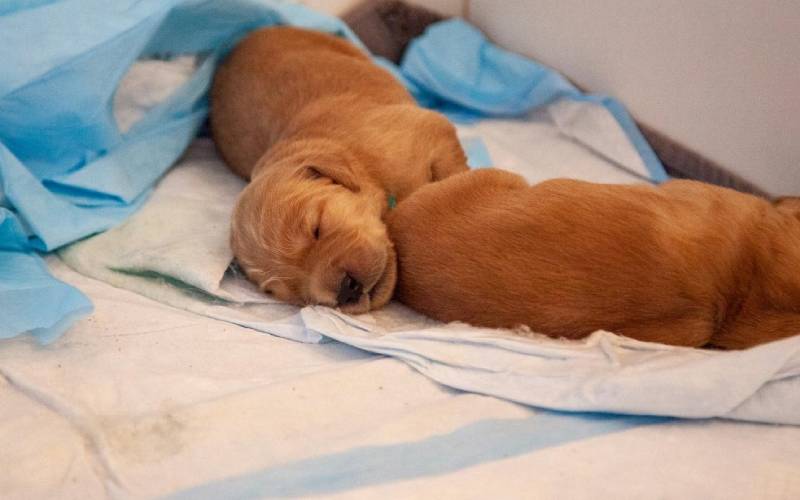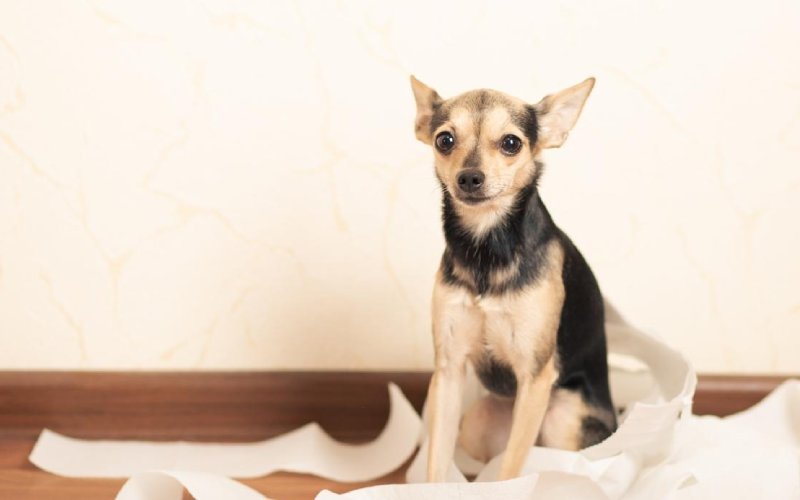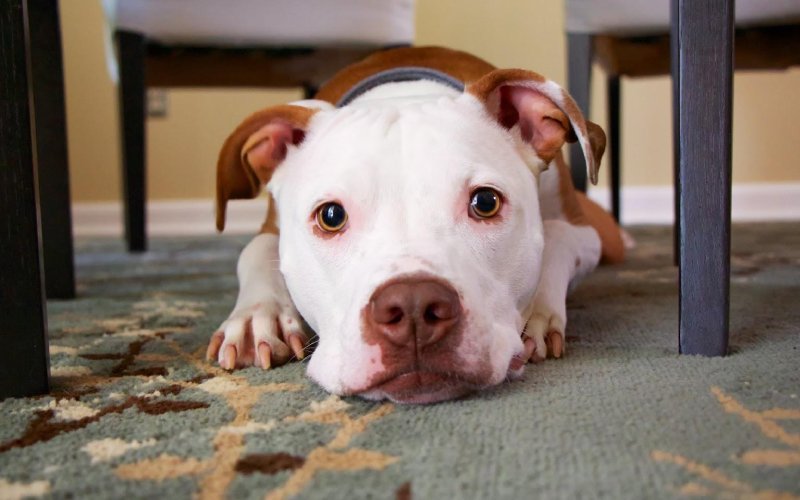Potty pads are often seen as a convenient solution for busy pet parents, but are they really the best option for our furry friends? Have you ever wondered if these pads could be doing more harm than good? Let’s dive into the heart of this matter.
Potty pads can lead to unsanitary conditions, environmental harm, recurring expenses, indoor habit formation, dangers from chewing, messy accidents, limited training space, persistent odors, household item confusion, and missed outdoor experiences.
Dive deeper with us as we explore the less-discussed aspects of potty pads. From behavioral implications to health concerns. We’ve got insights that every pet owner should consider. Keep reading to uncover why potty pads might not be the best choice for your beloved dog.
Unsanitary Conditions: The Hygiene Hazard of Used Pads
Used potty pads are more than just an eyesore; they’re a breeding ground for bacteria. When your dog does their business on these pads. They’re not just leaving behind waste – they’re creating a habitat for harmful microorganisms. These bacteria can multiply rapidly. Especially in a warm and enclosed space. It’s not just about the unpleasant smell, that’s a matter of health. The health risks associated with these bacteria-laden pads affect both pets and their owners.
Here’s a breakdown of how it impacts pet and human health:
| Health Risks for Pets | Health Risks for Humans |
| Urinary Tract Infections | Allergic Reactions |
| Skin Irritations | Respiratory Problems |
| Paw Infections | Bacterial Infections |
| Gastrointestinal Issues | Stress and Anxiety |
Eco-Unfriendly Choice: The Environmental Toll of Disposable Pads
The environmental impact of disposable potty pads is a significant concern. Particularly in terms of waste management and resource consumption.
- Non-Biodegradable Materials: Disposable potty pads are often made from plastics and other materials that do not biodegrade easily. That contributes to the growing problem of non-biodegradable waste in landfills.
- Long Decomposition Time: Every pad thrown away takes years – if not centuries – to decompose and that leads to increased landfill mass and the potential release of harmful chemicals into the environment over time.
- Resource Consumption: The production of disposable pads consumes resources like water and energy.
- Chemical Pollution: The breakdown of these pads can release chemicals into the soil and groundwater – posing risks to ecosystems and human health.
Recurring Expense: The Hidden Cost of Continuous Pad Purchases
The cost of potty pads might seem minimal at first glance. But when you add it up over time, it becomes a significant financial burden. Let’s break it down for you:
- Initial Cost: The initial purchase of potty pads may seem affordable – but it’s just the beginning. Each pad, though individually inexpensive can accumulate a significant cost over time.
- Long-Term Costs: Over the lifespan of a dog, which can range from 10 to 15 years. The total cost for potty pads can easily exceed several thousand dollars. That long-term financial burden is often not considered when initially choosing potty pads.
- Additional Expenses: Besides the cost of the pads themselves, there may be other related expenses. For example, disposal bags, cleaning supplies for accidents, and potentially increased waste management fees.
Indoor Habit Formation: Encouraging Pets to Eliminate Inside
Transitioning pets from pads to outdoor habits is no small feat. Dogs are creatures of habit. And once they get used to eliminating indoors, changing that behavior can be challenging for you. It requires consistent effort, patience, and sometimes professional training assistance, this process can be frustrating and time-consuming. Especially for busy pet parents or those living in apartments without easy outdoor access.
Here are some behavioral signs to watch for in pets that are used to potty pads:
- Reluctance to Go Outside: Dogs accustomed to indoor elimination can show hesitation or anxiety when they are encouraged to go outside.
- Marking Indoors: They might start marking various spots in the house. Confusing indoor spaces as appropriate elimination areas.
- Confusion and Stress: This can lead to confusion and stress for the dog. As they struggle to understand where it’s appropriate to relieve themselves.
- Inconsistent Habits: Dogs might start eliminating in areas similar to their pads. For example, rugs or laundry piles, leading to more indoor accidents.
Chewing and Shredding: The Hidden Dangers for Playful Pets
One significant concern with potty pads is the risk they pose when pets. Especially young and playful ones, they decide to chew or shred them. The materials used in these pads can be harmful if ingested. To better understand that risk. Let’s look at a table outlining common materials found in potty pads that can cause potential dangers to your dogs:
| Material in Pads | Potential Risks |
| Plastic Backing | Intestinal blockages, choking hazard |
| Absorbent Polymer | Can swell inside the stomach, causing discomfort or more severe issues |
| Adhesives | Toxicity, gastrointestinal irritation |
| Dyes and Fragrances | Allergic reactions, chemical toxicity |
| Fluff Pulp | Choking hazard, digestive tract obstruction |
Messy Accidents: Leakage and Overflows from Potty Pads
Another downside to potty pads is their inability to effectively contain waste. Leading to spills and leaks. They are designed to absorb liquid but there are instances where they can be overwhelmed, especially with larger or more active dogs. The result? Unpleasant messes spread beyond the pad, soiling floors, and carpets.
That not only creates extra cleanup work but can also lead to lingering odors and stains. In some cases, the pads might shift or bunch up. Further reducing their effectiveness in containing waste.
Limited Area Training: The Constraint of Small Space Learning
Potty pads limit the area where our pets learn to eliminate. This confinement can lead to several problems.
- It restricts your pet’s understanding of appropriate elimination areas to a very small space. This can be particularly problematic if you move the pad or travel with your pet. As they might not recognize the new location as an acceptable spot.
- This limited space training doesn’t mimic the natural behavior of dogs. Who typically prefer to eliminate in various locations. By confining them to a small area, we’re not catering to their instinctual needs.
Persistent Odors: The Lingering Smell of Used Pads
Another significant issue with potty pads is their tendency to retain odors. No matter how frequently you change them. The smell of urine can linger. And affecting the ambiance of your home. This is not just about the unpleasantness of the odor. But, It’s also about the feeling of cleanliness in your living space.
Persistent odors can make your home feel less welcoming. That can even be embarrassing when you have guests. Moreover, these smells can permeate fabrics and furnishings – making them harder to eliminate over time.
Household Item Confusion: Pets Mistaking Rugs for Pads
One of the less talked about but significant issues with potty pads are the confusion they can create for our pets. Dogs, the younger ones, might be unable to differentiate between the pad and similar items in the house. For example, rugs or carpets. That confusion stems from the similarity in texture and appearance between these items.
When a dog gets used to eliminating on a pad. They might mistakenly identify other soft surfaces in the home as appropriate spots for relief. This not only leads to unwanted accidents but can also make house training more challenging. It’s important to provide clear and consistent guidance to our pets. That is about where it’s acceptable to eliminate. And, unfortunately, potty pads can blur these boundaries.
Missing Outdoor Adventures: The Lack of Natural Bathroom Breaks
Another aspect that is often overlooked, is the missed opportunity for natural bathroom breaks. That comes with relying solely on potty pads. Outdoor bathroom breaks are more than just a chance for relief – they’re an integral part of a dog’s daily routine. These breaks can provide essential physical exercise, mental stimulation, and the opportunity for social interaction of your pups with you and the outside environment.
Dogs are naturally inclined to explore and engage with their environment. And, outdoor walks fulfill this instinctual need. By limiting our pets to indoor pads, we’re potentially depriving them of these vital experiences. The benefits of regular outdoor activity for dogs are manifold, including better physical health, improved behavior, and a stronger bond of pet with you.
Final Thoughts
While potty pads seem very convenient in the start. But, they often lead to more challenges than benefits for both pets and their owners. From causing household confusion to missing out on the important benefits of outdoor breaks. These pads can inadvertently complicate our pets’ lives. As devoted pet parents, it’s our responsibility to seek solutions. That promotes not only the cleanliness of our homes but also the health, happiness, and well-being of our beloved dogs. Let’s choose paths that nurture their natural instincts and strengthen our bond with them.
Let us help you with potty training! Give us a call at:
972-372-9225
[email protected]
Olk9dfw.com




